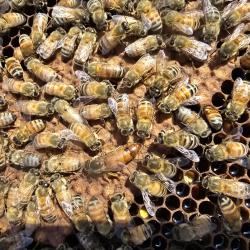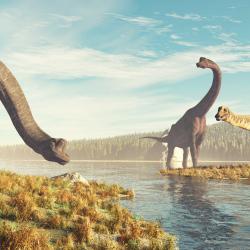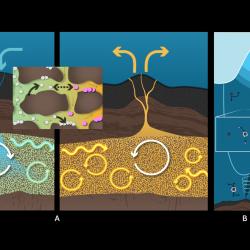A Terp Fossil Hunt, Just Down the Street
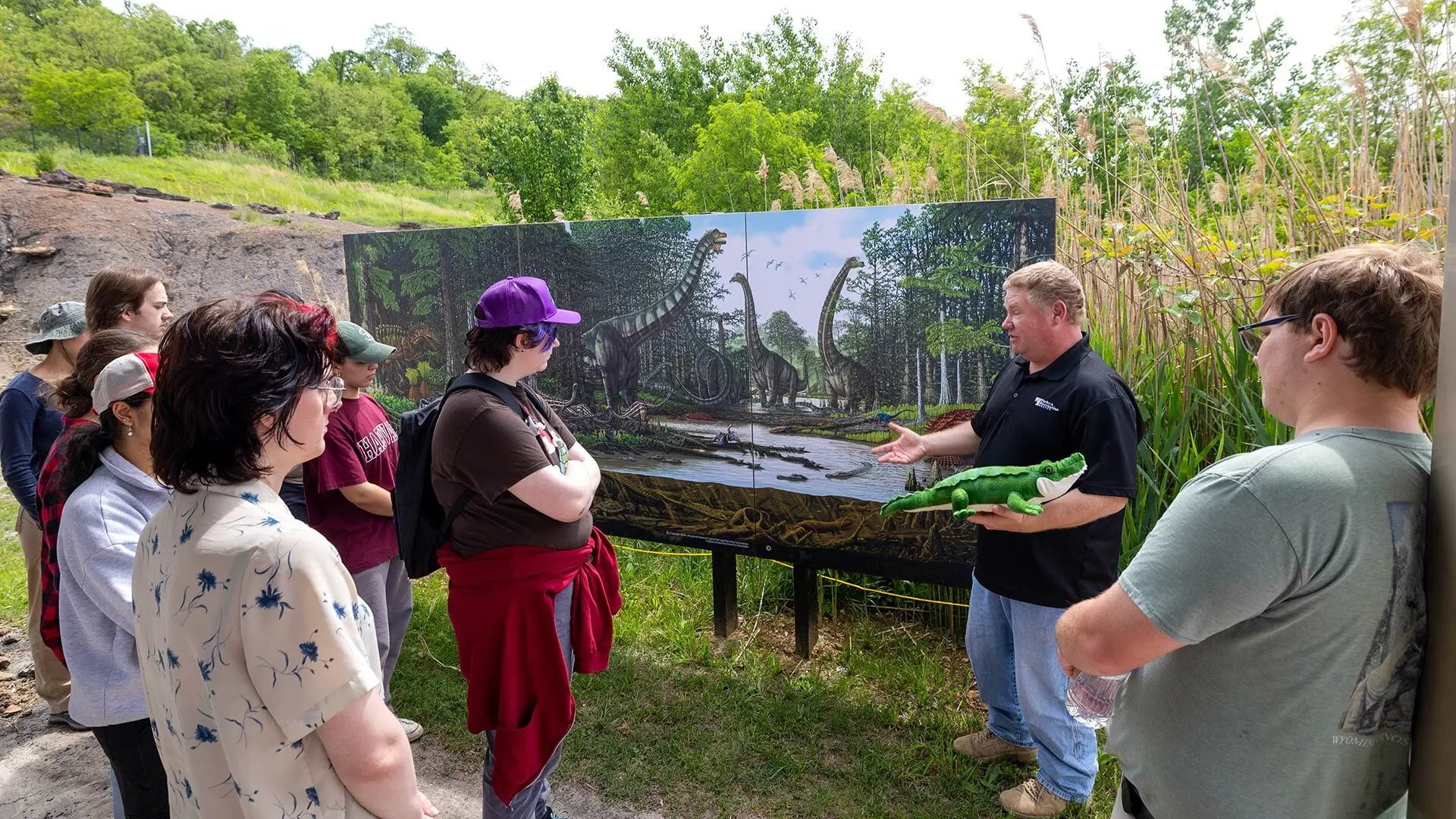
Liam Driver ’27 shouted in excitement as he picked up a shard of rock out of orange clay and ironstone on an exposed gray hillside.
As his classmates gathered around him, he held out his hand, revealing a sliver of bone in the center of his palm. “That blueish part is what gave it away” as a fossil, he said.
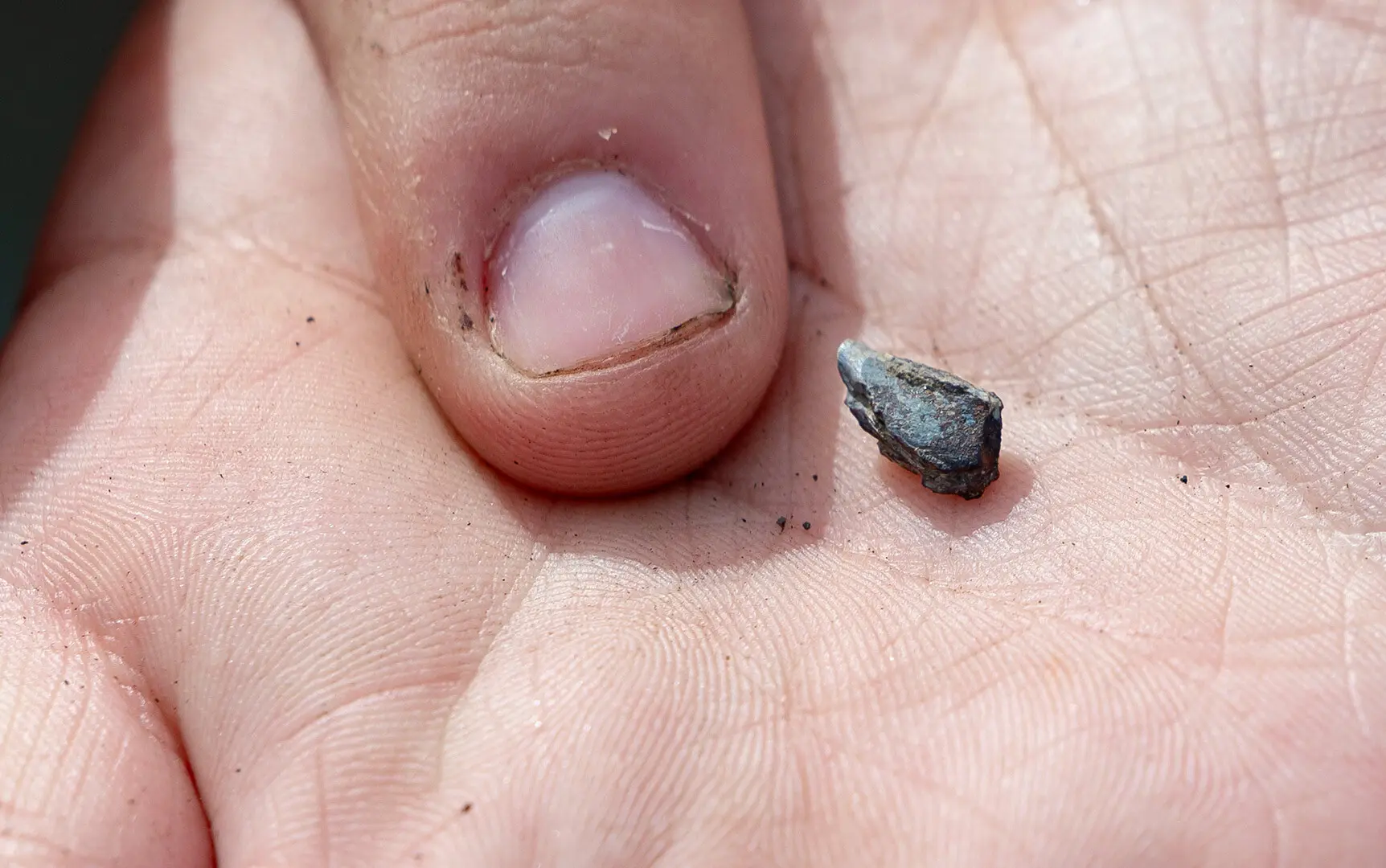
It might have been part of a now-extinct species of lungfish 115 million years ago that, per its name, could also breathe outside of the water. It’s one of many animals and plants that once thrived in a lush early Cretaceous waterway that’s now an unassuming excavation site, tucked away at the end of a long drive of warehouses and office buildings in Laurel, Md.
Luckily for University of Maryland students, the “bone bed”—the most dinosaur fossil-rich site east of the Mississippi River—is just a 25-minute trip up Baltimore Avenue. For Driver and his classmates on a sunny May afternoon, it was a chance to explore a landscape they’d learned about in their historical geology class, taught by Principal Lecturer Thomas Holtz.
“To understand geology and especially historical geology, students need to see it in context,” said Holtz, who has been taking students to the site since the 1990s. His course spans 4.6 billion years of Earth’s history, from the Precambrian to the Anthropocene, balancing lessons on physical changes like the movement of continents with those on organisms, evolution and mass extinctions. “I try to keep it together so they’re not thinking that the rocks, the environment and the living world are separate.”
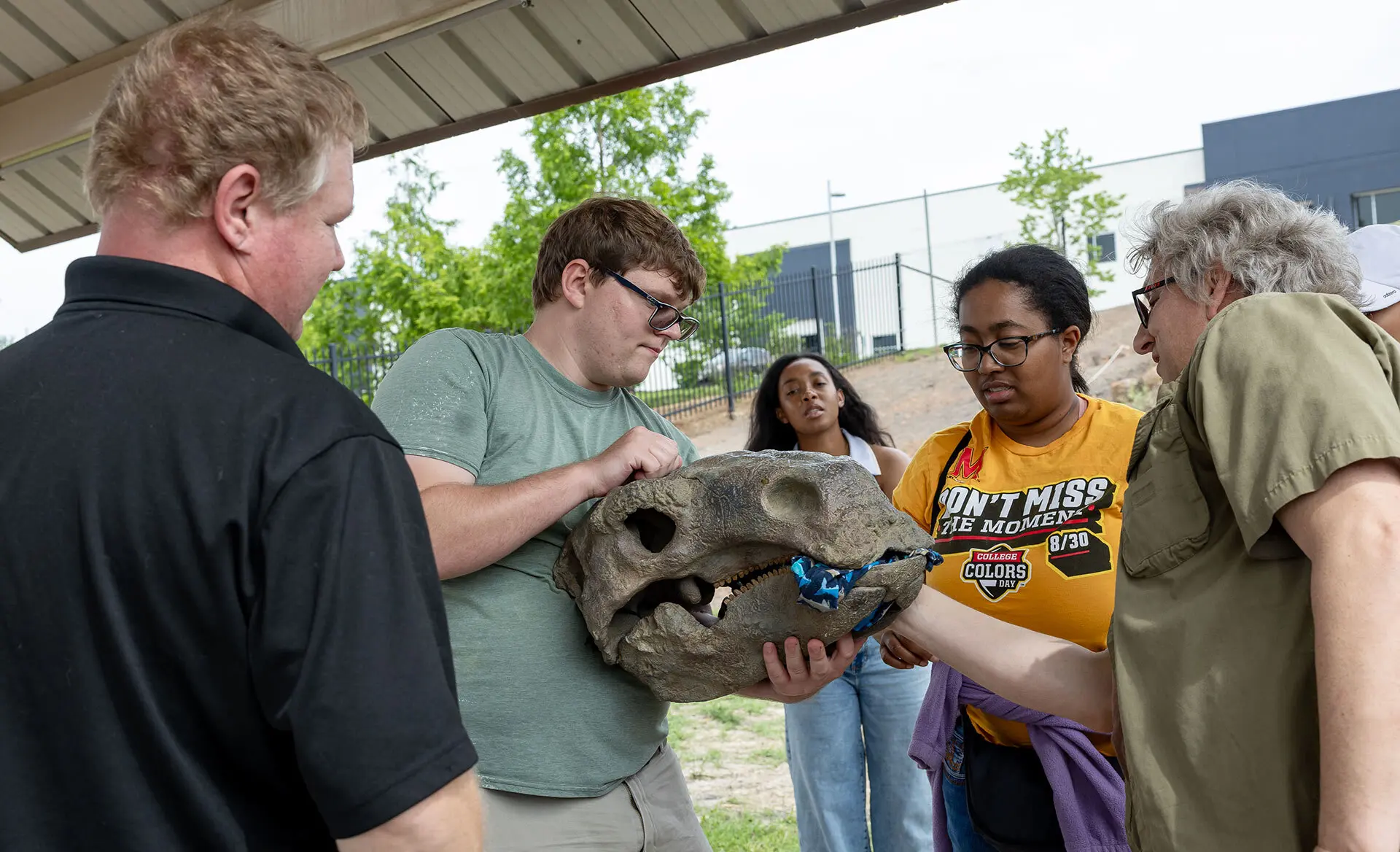
At the end of the semester, after students have examined fossils in labs, they pile into a van and he drives them out to the state-owned Dinosaur Park. There, park paleontologist John-Paul Hodnett shows off major local discoveries, including the Priconodon, an armored dinosaur that could grow up to 45 feet long; the long-necked, plant-eating Astrodon, Maryland’s state dinosaur; and the Acrocanthosaurus, the largest predator in North America before the arrival of the T. rex, which garnered headlines when it was unearthed on the site three years ago. Bones of early mammals, as well as crocodiles, fish and turtles, can also be found.
“Prince George’s County really has a fantastic fossil record,” said Hodnett, from National Harbor in the south to the Commanders stadium in Landover up to College Park. (In fact, Holtz added, before high-rises were built along Baltimore Avenue, people could find plant fossils right near campus. “Potentially we have some of these same dinosaurs underneath these buildings,” he said.)
After giving an overview of the park, Hodnett set the students loose on the hillside, where recent rains helped clear some clay, which could expose new finds.
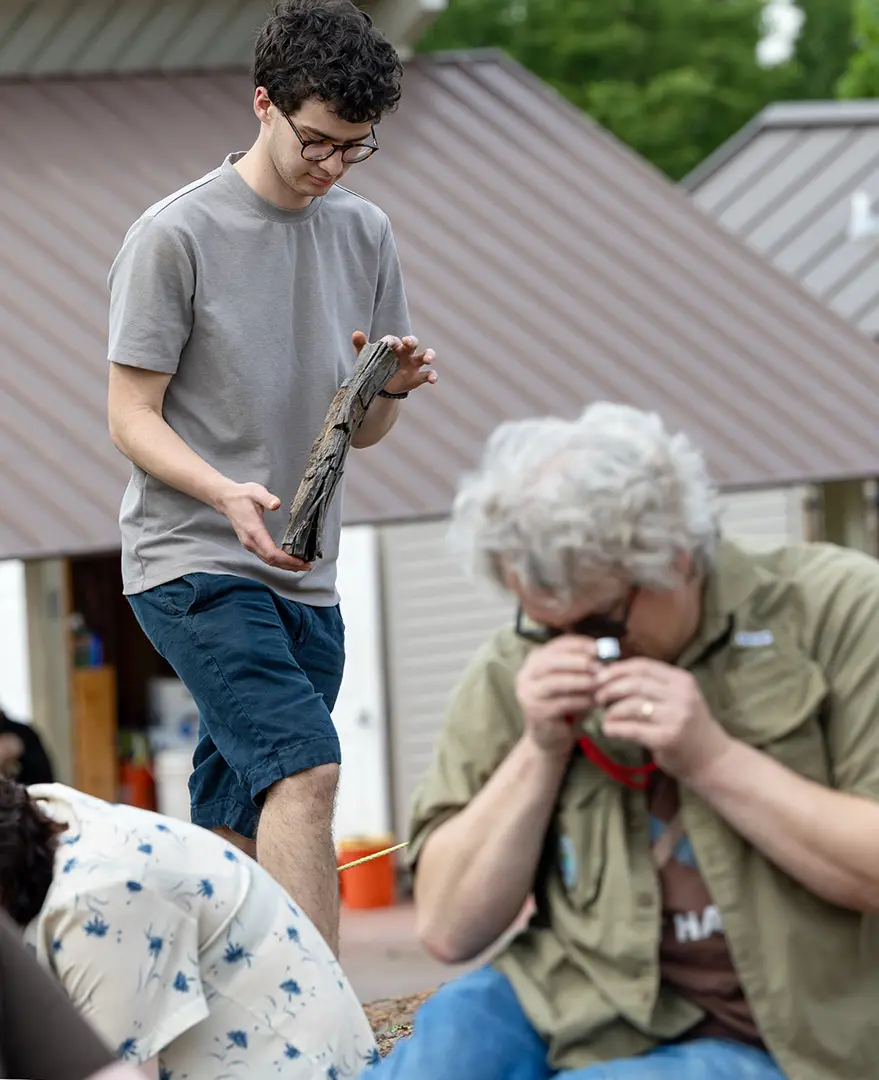
Nicholas Comey ’27 hefted a foot-long piece of lignite, preserved wood that’s “on its way to becoming coal,” said Holtz, and is one of the most common fossils at the site.
“I do a lot of woodworking and blacksmithing,” said Comey. “I wanted to see if there’s any way I can turn this into something cool.”
Other students got on their hands and knees, hoping to come across a bit of turtle shell, shark and crocodile teeth, or chunk of dinosaur bone, as previous classes have done.
“I can’t say they always find exciting stuff,” Holtz said, which proved to be mostly true on this recent visit.
A small white stone Chloe De La Vega ’26 picked up turned out to just be quartz; a rock with a purple imprint that Taylor Rubin ’25 turned over was intriguing but needed more investigation; and several people got tricked by flaky, light-colored schist, easily mistaken for a bit of bone.
But just before the class was about to leave, Driver, who also volunteers at the park, triumphantly held up another find: a fossilized pine cone, smaller than a fingernail and split in half, revealing the cross-section inside.
“This is so small! How did you even pick that out?” asked a classmate.
“You’ve got to be patient,” he said. “You’ve got to have a good eye and you’ve got to get close to the ground.”
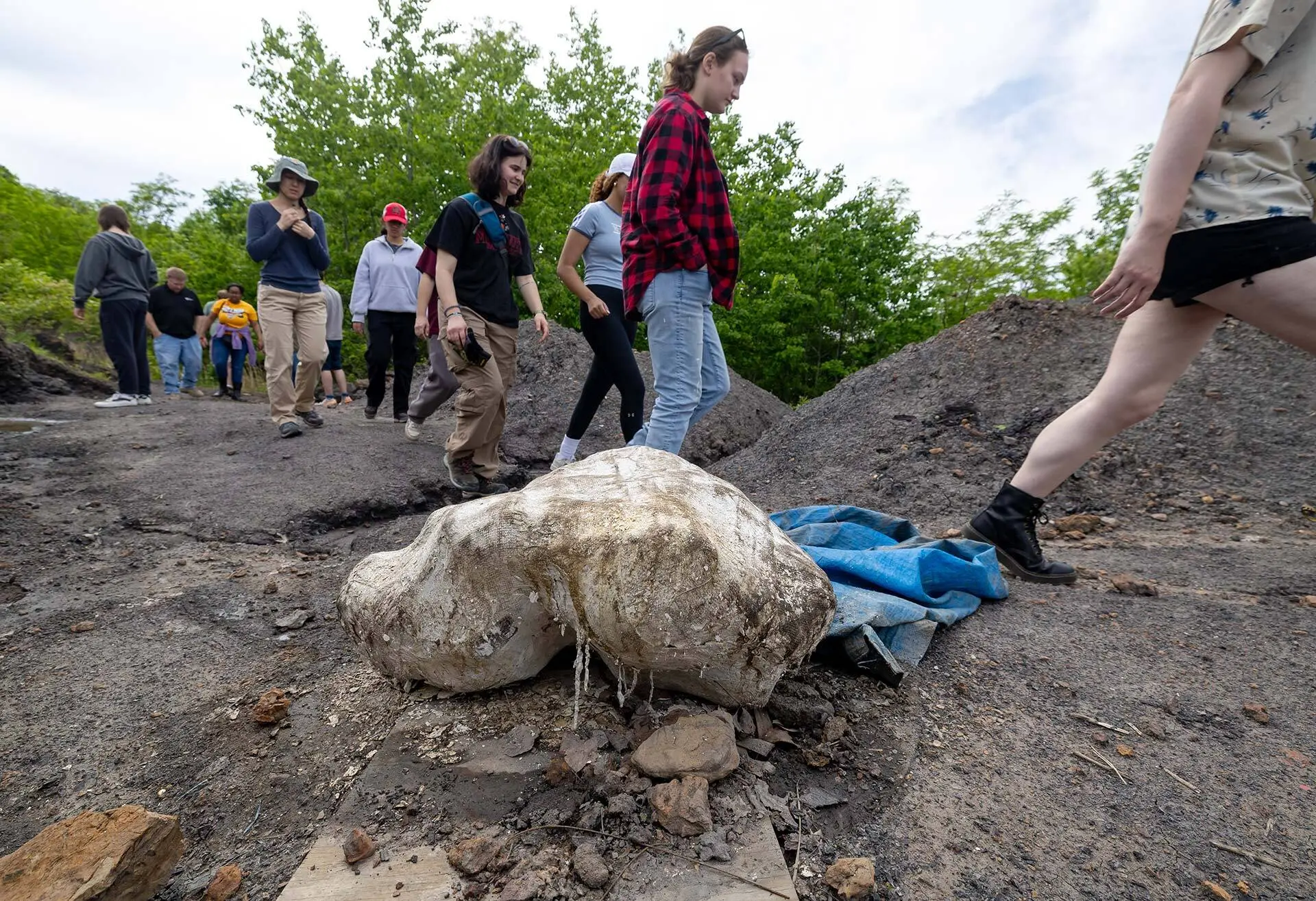
Written by By Karen Shih ’09



